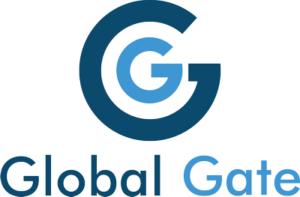Garnishment in Payroll
Dealing with garnishments payroll can be challenging for both employers and employees. It’s often confusing and stressful. This guide provides clear explanations and practical advice for handling garnishments payroll.
We’ll cover everything from the legal basis of wage garnishments to managing the process. Whether you’re an employer or an employee facing a garnishment order, this guide offers valuable insights into garnishments payroll.
Table of Contents:
- Understanding Garnishments Payroll
- Common Reasons for Garnishments Payroll
- How Garnishments Payroll Work for Employers
- Navigating Garnishments Payroll as an Employee
- The Impact of Garnishments Payroll on Employees
- Conclusion
Understanding Garnishments Payroll
A wage garnishment is a legal process where part of an employee’s wages is withheld to pay a debt. A court order instructs the employer to deduct a specific amount from the employee’s pay and send it directly to the creditor.
Garnishments payroll are governed by federal and state garnishment laws. These laws dictate the types of debts subject to garnishment, the maximum amount that can be withheld, and the garnishment process for employers. The Federal Wage Garnishment Law, Title III of the Consumer Credit Protection Act (CCPA), offers key guidelines. This law helps with credit protection by ensuring employees aren’t fired for a single debt garnishment and sets limits on how much can be garnished from a pay period.
Common Reasons for Garnishments Payroll
Several types of debt can lead to wage garnishments. Some common examples of garnishments include:
- Unpaid Taxes: The IRS can issue an IRS levy to collect unpaid federal taxes. State tax agencies can also garnish wages for unpaid state taxes.
- Court Judgments: If a creditor wins a lawsuit, the court can issue a garnishment order against the debtor’s employer.
- Child Support and Alimony: Court-ordered child support and alimony payments are often collected through wage garnishments.
- Student Loans: Defaulted federal student loans can lead to wage garnishment, affecting the employee’s disposable income.
- Other Debts: This may include credit card debt, medical bills, personal loans, or other unpaid consumer debts.
It’s important to note that creditors usually must first obtain a court order before garnishing someone’s wages. Understanding these garnishment rules can protect an individual’s minimum wage and employee wage.
How Garnishments Payroll Work for Employers
The garnishment process starts when an employer receives a court order. This order details the amount to withhold, the creditor’s information, and other relevant details. The employer must comply; failure to do so can result in penalties. These garnishments from an employee’s wages affect a small business in their daily benefits administration, workforce management, and talent management needs. Here’s a step-by-step explanation of the garnishment process.
- Notification: The employer receives a court order or levy. The order details how the garnishments payroll should be handled.
- Verification: The employer reviews the order for accuracy and completeness. They verify all the garnishment rules are being followed and consider getting legal advice regarding compliance.
- Employee Notification: The employer informs the employee about the wage garnishment order. The employer should provide a copy of the order and explain the process, specifically addressing the employee’s wages and how it affects them.
- Withholding: The employer deducts the specified amount from the employee’s disposable earnings. This is calculated from their earnings after mandatory deductions, like taxes. The CCPA generally limits garnishment to 25% of disposable earnings. (Consumer Credit Protection Act)
- Remittance: The employer sends the withheld amount to the creditor as instructed in the court order. They adhere to any specific time frame stated.
- Termination of Garnishment: The employer continues withholdings until they receive official notice to stop. Employers must maintain open communication during the garnishment work with employees regarding their garnished wages and pay stubs.
Managing multiple garnishments for one employee can be complex. The CCPA and state laws provide guidance. Understanding garnishment orders is critical for accurate processing.
Navigating Garnishments Payroll as an Employee
If your wages are garnished, understand your rights and responsibilities. Review the documentation and order terms thoroughly.
Stay organized financially. Contact an attorney or agency if needed. If you’re dealing with an IRS levy, you can consider contacting them for support withholding or other payment options.
Exploring options like voluntary wage assignments might offer additional control over your finances. These can be arranged in place of garnishments or other debt management tools.
The Impact of Garnishments Payroll on Employees
Wage garnishments can be very stressful for employees. The reduced income can strain budgets, making it harder to manage existing debts.
Employees can maintain some financial control. They can explore options like repayment arrangements or offer in compromises with creditors. This helps regain financial stability and ease some stress.
Garnishments payroll is a complex topic, but it can be managed effectively. Employers, employees, and creditors/agencies should communicate openly.
Knowledge and proactive steps are essential for navigating these situations. Understanding the process lessens stress and promotes smooth resolution.
Disclaimer: This information is for educational purposes only and not legal advice. Consult a qualified attorney for legal assistance.
Here’s How It works:
Free Consultation
One of our tax expert will get the details of your situation and discuss your options for FREE
Investigation
Initiate client protection Establish communication with IRS Review case summary options (2-4 weeks)
Resolution
Establish IRS compliance Achieve the best resolution (3-9 months)
Freedom
Congratulation, your case has been closed (Done)
